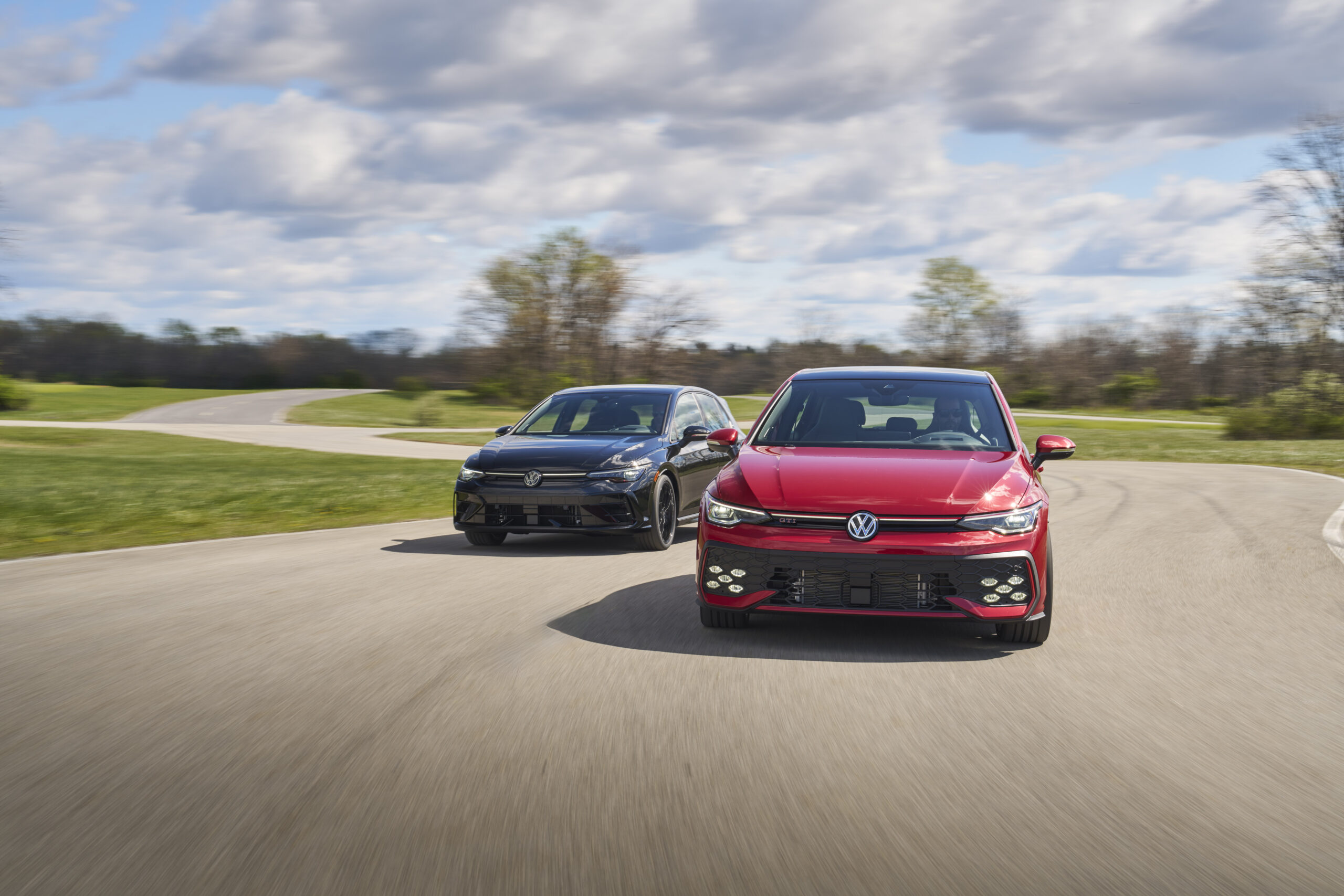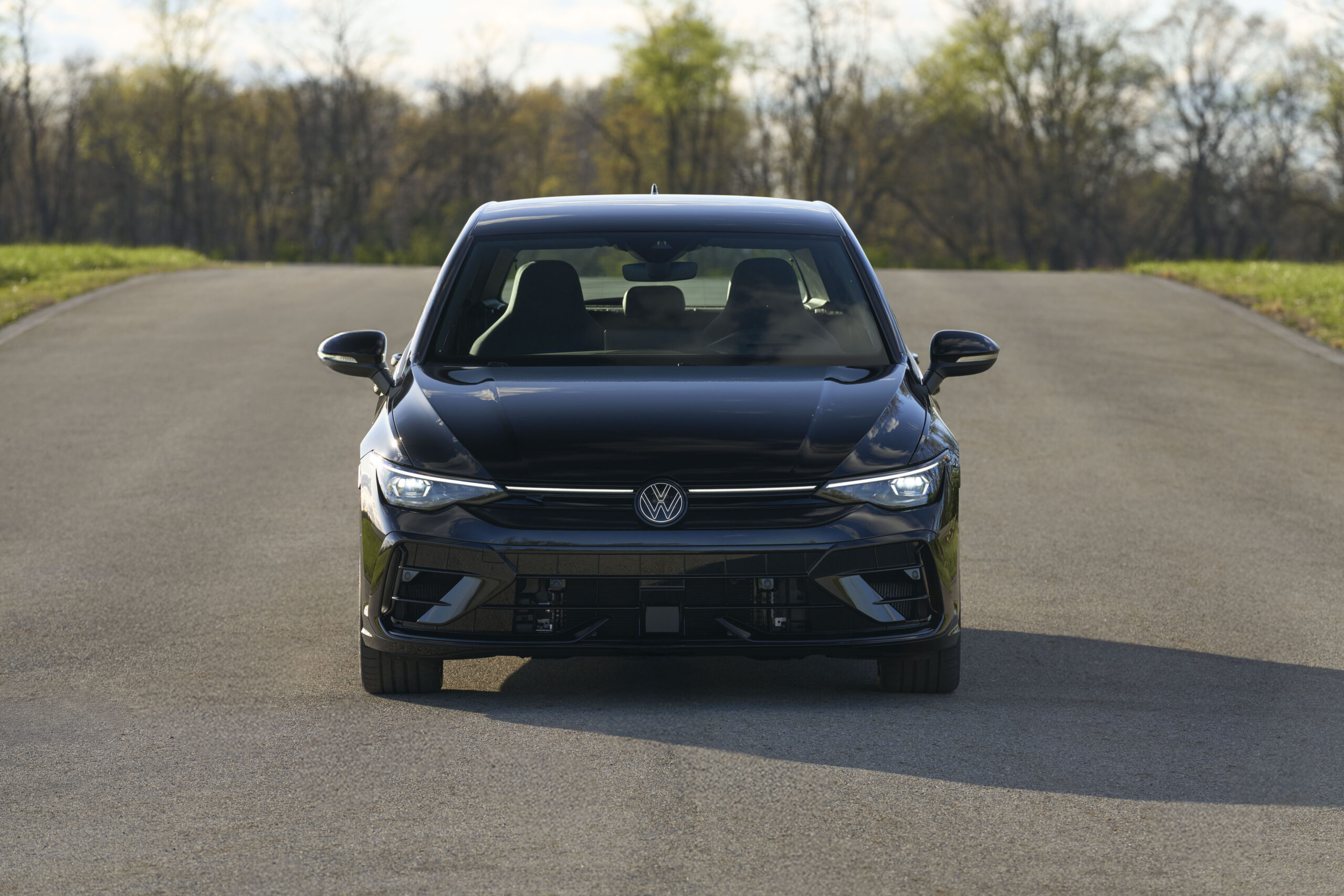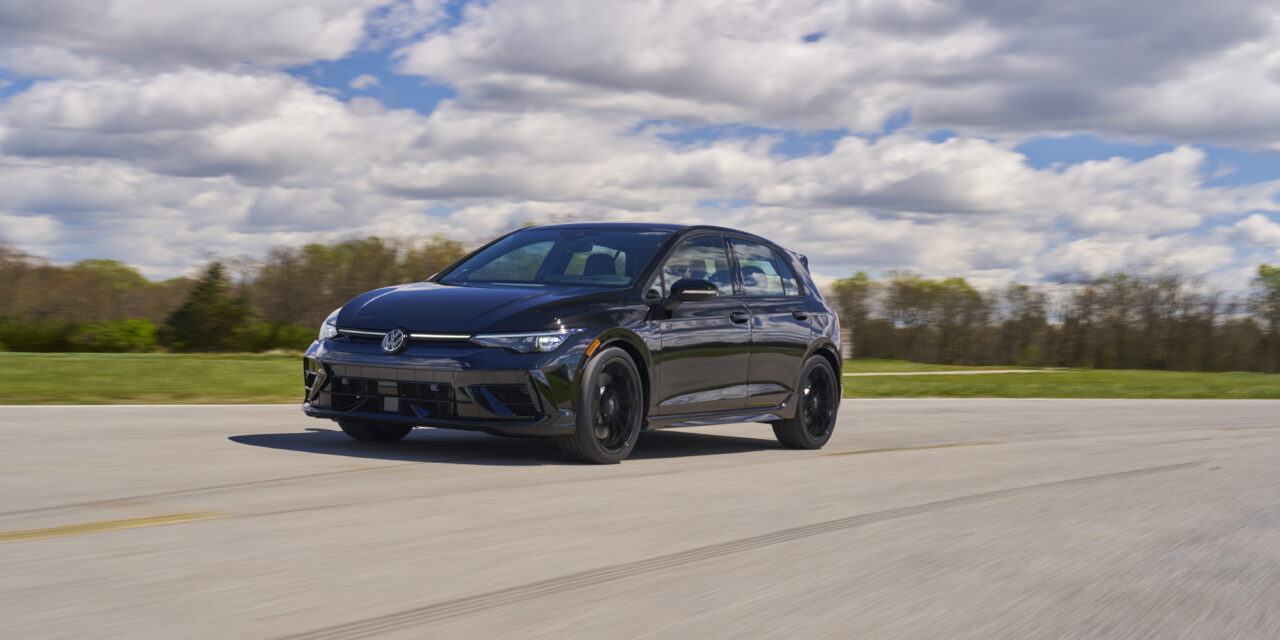Volkswagen Golf R
Welcome to the ultimate deep dive into one of the most revered hot hatches on the planet: the Volkswagen Golf R! For decades, the Golf has been a benchmark for practical, everyday motoring, but the “R” designation elevates it to a whole new level of performance and sophistication. Whether you’re a long-time enthusiast or just curious about what makes this car so special, join me as we explore the history, evolution, and undeniable appeal of Volkswagen’s all-wheel-drive powerhouse.
The lineage of the Golf R actually traces back to the Golf R32, which first appeared in 2002 with the Mk4 Golf. This original R32, a true trailblazer, featured a naturally aspirated 3.2-litre VR6 engine pumping out 241 bhp and was notable for being the world’s first production car offered with a dual-clutch gearbox (DSG). It was also the first Golf to feature a Haldex Traction-based 4MOTION all-wheel-drive system. The R32 name continued with the Mk5 Golf, before the “R” officially took over with the Mk6 generation in 2009, signifying a shift to a potent 2.0-litre turbocharged four-cylinder engine and setting the stage for the modern Golf R we know and love today.
Over its generations, the Golf R has consistently pushed the boundaries of hot hatch performance. The Mk6 Golf R, for instance, delivered around 266 bhp. The Mk7, often lauded as a sweet spot by enthusiasts, saw power increase to 296 bhp (later 306 bhp with the facelift). The current Mk8 Golf R boasts a formidable 315 bhp (or 328 bhp in the limited “20 Years” edition and the latest update), allowing for blistering 0-60 mph times as low as 4.6 seconds, all while maintaining its signature 4MOTION all-wheel drive and a choice of manual or DSG transmissions. It’s a car that seamlessly blends exhilarating speed with everyday usability, a testament to its enduring design and engineering excellence.

Performance
When it comes to raw performance, the Golf R truly shines as a segment leader. Across its generations, it has consistently delivered impressive speed, evolving from the Mk4 R32’s respectable 0-60 mph time of 6.2 seconds with 238 bhp, to the latest Mk8 Golf R that can achieve the sprint in as little as 4.1 seconds (with the DSG transmission) thanks to its 315 bhp turbocharged 2.0-liter engine. Top speeds are typically electronically limited to 155 mph, though the optional R Performance package on recent models can unlock a higher top speed of 167-168 mph, showcasing its track-ready capabilities. This potent combination of power and Volkswagen’s advanced 4MOTION all-wheel-drive system ensures exceptional grip and acceleration in various conditions, making it a truly exhilarating drive.
Despite its high-performance credentials, the Golf R also offers a surprising degree of everyday efficiency, especially when driven conservatively. While fuel economy will naturally vary based on driving style and generation, later models like the Mk7 and Mk8 Golf R typically offer official combined MPG figures in the mid-30s. For instance, the current Mk8 Golf R (with the 7-speed DSG) is rated around 34-35 MPG combined, though real-world driving, especially when exploring its full potential, may see figures in the high 20s. This balance of blistering speed and reasonable fuel consumption is a key factor in the Golf R’s enduring appeal, demonstrating that a thrilling driving experience doesn’t necessarily have to come at the expense of practicality.
Maintenance
Maintaining a high-performance vehicle like the Golf R is crucial for ensuring its longevity, optimal performance, and to protect your investment. While modern Volkswagen vehicles are generally reliable, the Golf R’s sophisticated powertrain, including its turbocharged engine and Haldex all-wheel-drive system, requires specific attention beyond standard vehicle maintenance. Adhering to the manufacturer’s recommended service schedule is paramount, but given the enthusiast nature of the Golf R, many owners opt for more frequent fluid changes and inspections, especially if the car is driven hard or frequently on track. This proactive approach can help mitigate common issues and ensure the car continues to deliver its exhilarating performance.
Key maintenance items for the Golf R include regular oil and filter changes, which are often recommended every 10,000 miles or annually, whichever comes first, though many enthusiasts prefer shorter intervals (e.g., 5,000-7,500 miles) due to the demands placed on the engine. Spark plugs typically require replacement every 3-4 years or around 40,000 miles. A critical component unique to the R is the Haldex all-wheel-drive system, which requires its fluid and filter to be changed periodically – generally every 3-4 years or 40,000 miles. Neglecting Haldex servicing can lead to issues with power delivery to the rear wheels and potentially expensive repairs, as the system relies on clean fluid to actuate its multi-plate clutch effectively.
Beyond routine servicing, owners should be aware of common areas that might require attention. Wearable components like brakes and tires, especially on a performance car, will likely need replacement more frequently than on a standard Golf. Some owners have reported issues with water pumps, particularly on earlier Mk7 models, and it’s always wise to monitor coolant levels. Furthermore, the DSG automatic transmission, if equipped, has its own service interval for fluid and filter changes (often every 40,000-80,000 miles, depending on the specific gearbox), which is vital for its smooth operation and longevity. Staying on top of these specific maintenance requirements will ensure your Golf R remains a joy to drive for years to come.

Golf R Reliability
When assessing the reliability of the Volkswagen Golf R, it’s generally considered to be a robust and well-engineered vehicle, benefiting from Volkswagen Group’s extensive experience and the shared platforms with other reliable models. Owners often praise the car’s solid build quality and the feeling of durability it conveys. While no car is entirely free from potential issues, the Golf R typically does not suffer from widespread catastrophic failures, especially if diligently maintained. Its powertrain, particularly the EA888 engine found in Mk6, Mk7, and Mk8 generations, is a well-proven unit used across many Volkswagen Group vehicles, contributing to its generally good reputation for dependability when serviced correctly. However, as with any performance vehicle, individual reliability can heavily depend on how the car has been driven and the consistency of its maintenance history.
Track/Racing
The Volkswagen Golf R, particularly the latest Mk8.5 generation, is a highly capable hot hatch on the racetrack, renowned for its all-wheel-drive system and impressive power delivery. Reviews highlight its ability to generate significant speed with ease, thanks to its powerful 2.0-liter turbocharged engine and quick-shifting dual-clutch transmission. The enhanced torque vectoring system helps mitigate understeer and effectively puts power to the ground, allowing for quick exits out of corners. While some enthusiasts might find the driving experience a little too “digital” or less raw compared to some competitors, its grip, composure through corners, and user-friendly performance make it flattering for track novices and genuinely quick in experienced hands. However, sustained track use may expose limitations in the braking system and oil temperatures, suggesting that upgraded pads and cooling modifications could be beneficial for dedicated track days.
When pitted against the Hyundai i20 N, the Golf R generally offers a higher power output and the advantage of all-wheel drive, contributing to superior straight-line acceleration and traction, especially in less-than-ideal conditions. The i20 N, on the other hand, is lauded for its more engaging and “raw” driver involvement, often described as a pure and entertaining hot hatch due to its lighter weight, stiffer setup, and direct feel. While the Golf R might be quicker overall on a given lap, the i20 N delivers a more visceral and playful experience, often encouraging lift-off oversteer and providing a strong human-machine connection, making it a favourite for those prioritizing driver engagement over outright lap times.

Our Thoughts of The Golf R
The Golf R, in my view, is a truly compelling car. It strikes an excellent balance, offering a blend of exhilarating performance and everyday usability that few other vehicles can match.
One of its most significant strengths is its proven performance. It’s not just quick in a straight line; the all-wheel-drive system provides incredible traction and confidence through corners, making it a joy to drive on a variety of roads. This performance isn’t at the expense of practicality either, which is a huge plus.
Beyond its raw speed, I particularly appreciate its reliability. Knowing that it’s built on a solid and dependable platform provides a lot of peace of mind. This reliability also feeds into another aspect I really love about the Golf R: its moddability. The robust engineering means it can handle power upgrades and other modifications exceptionally well, allowing owners to truly tailor the car to their preferences without immediate concerns about its longevity. The aftermarket support is vast, which makes exploring different tuning options incredibly easy and exciting.
Overall, the Golf R, from my perspective, is a fantastic package. It’s a car that delivers on its promises of performance, offers the peace of mind of reliability, and provides an excellent canvas for personalization.

